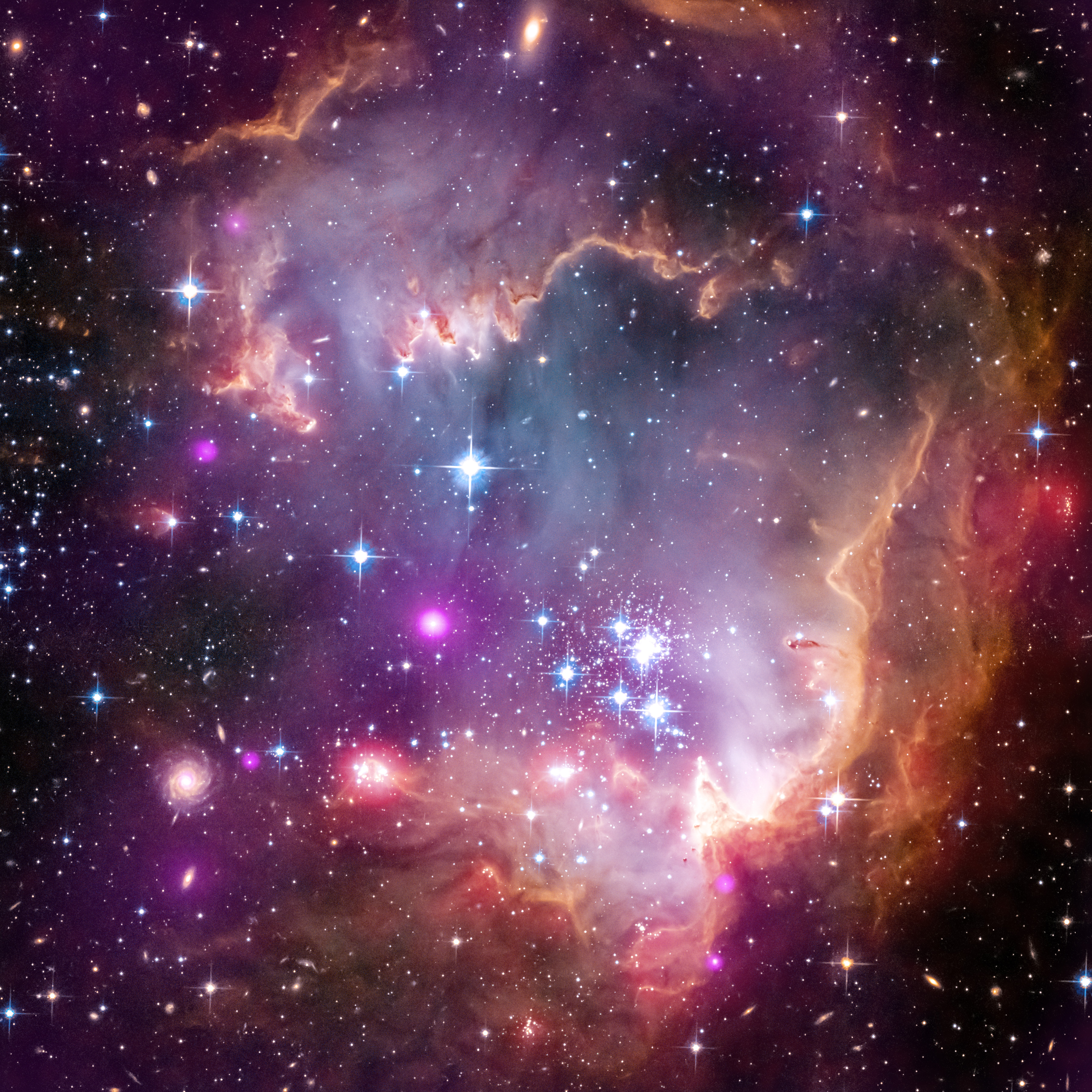Magellanic << `MAJ` uh LAN ihk >> Clouds are the closest galaxies to the Milky Way, the galaxy that contains Earth. The Magellanic Clouds appear as two small, hazy patches of light in the Southern Hemisphere. The Large Magellanic Cloud is about 160,000 light-years away from Earth, and the Small Magellanic Cloud is about 180,000 light-years away. A light-year is the distance that light travels in one year—about 5.88 trillion miles (9.46 trillion kilometers).

Astronomers classify the Magellanic Clouds as irregular galaxies because the distribution of the stars within them does not follow a particular pattern. Some astronomers think the Small Magellanic Cloud is made up of two galaxies, one appearing behind the other as seen from Earth. The Magellanic Clouds contain billions of stars, but individual stars can be distinguished only with the most powerful telescopes. As a result, the galaxies appear cloudy to the naked eye. The Magellanic Clouds also contain a huge quantity of gas. New stars are constantly forming from this gas, which is composed mainly of hydrogen. In addition, much of the light from the Magellanic Clouds comes from young, extremely luminous, hot blue stars that are surrounded by glowing clouds of this gas.
Because they are visible only in the Southern Hemisphere, the Magellanic Clouds were long unknown to astronomers in the Northern Hemisphere. They were first recorded by Europeans in the early 1500’s, and were later named in honor of the Portuguese explorer Ferdinand Magellan, whose expedition circumnavigated the globe. However, it was not until the early 1900’s that the clouds were recognized as galaxies outside the Milky Way.
